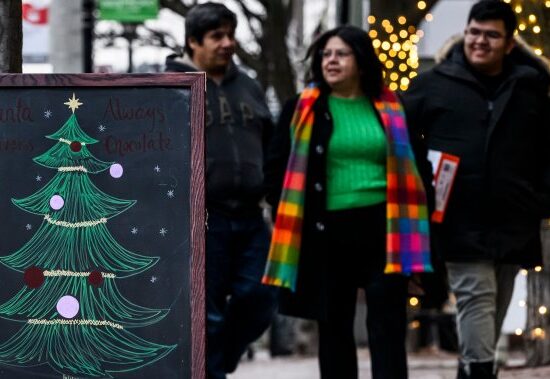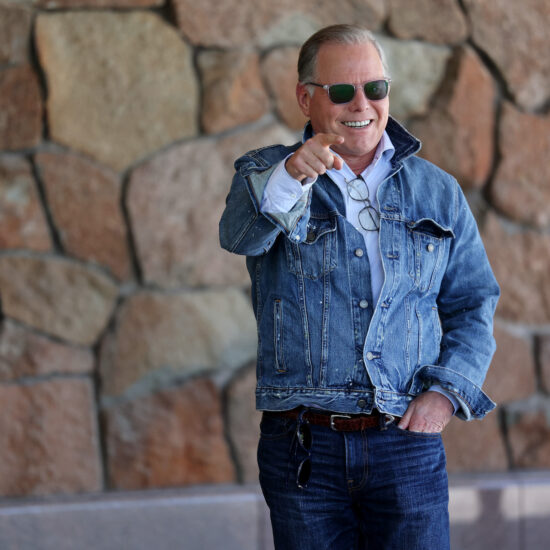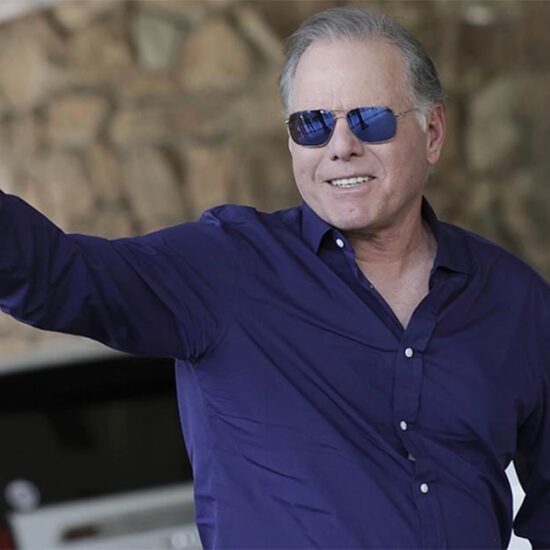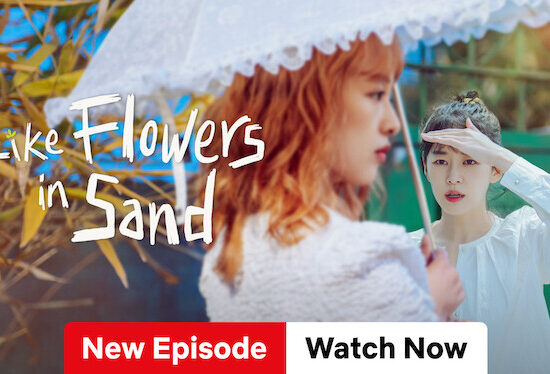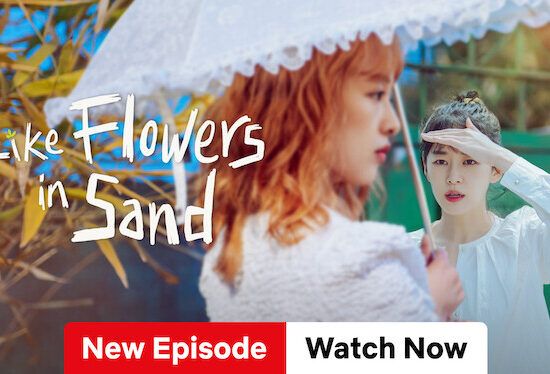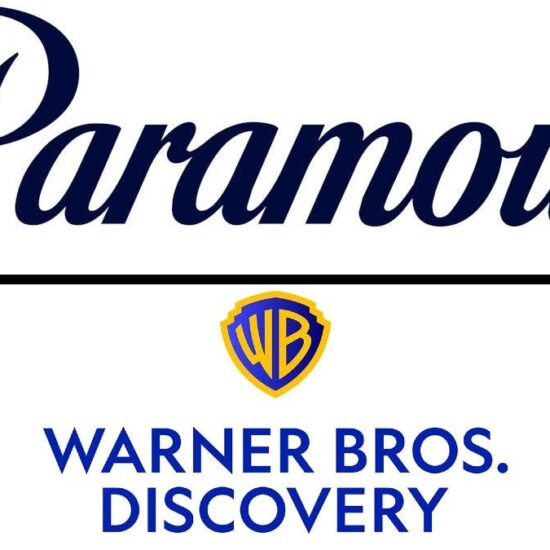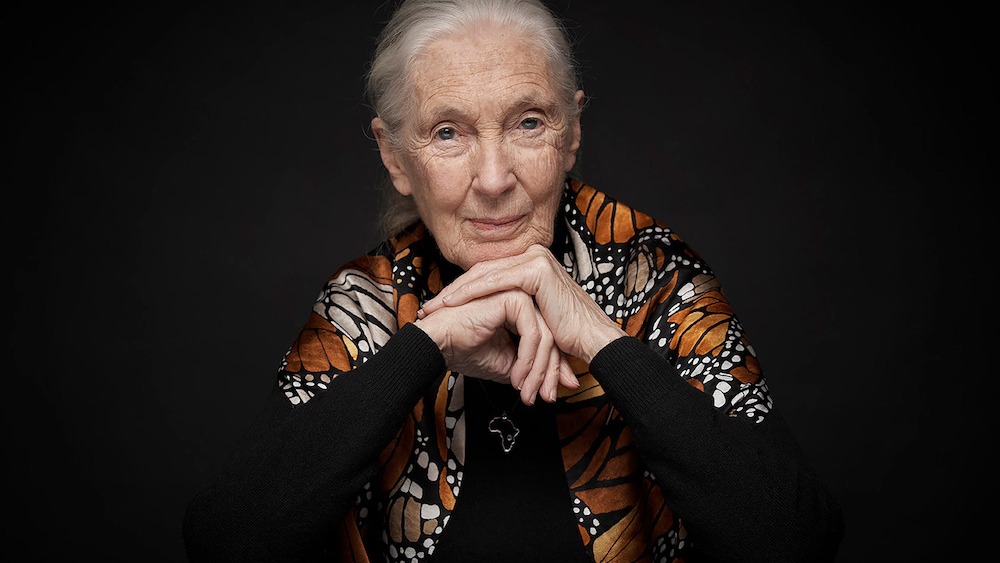
The work of legendary ethnobiologist, conservationist and activist Jane Goodall has already inspired people to care for endangered species and the environment for decades — but the doctor’s latest endeavor continues her work in motivating the next generation.
Apple TV+’s mission-driven children’s series “Jane” harnesses the power of TV, with Emmy-winning creator J.J. Johnson (“Endlings,” “Ghostwriter”) using Goodall’s teachings to motivate kids to take a stand for endangered species and care for the environment. “Jane,” from the Jane Goodall Institute and Johnson’s company Sinking Ship Entertainment, premiered on April 14, with 10 episodes now available on Apple TV+.
“Jane” features eager 9-year-old environmentalist Jane Garcia (Ava Louise Murchison) — who is inspired to help save the planet, following in the footsteps of her role model, Goodall — along with her friends David (Mason Blomberg) and a chimpanzee named Greybeard. Each episode focuses on a different endangered species, such as Apis mellifera (Western honey bee) and Panthera tigris (tiger). Blending live action and CGI — and featuring an epic theme song “One Step Closer” written by Diane Warren, and sung by Leona Lewis — the show depicts the friends taking a stand for the species and the environment, and getting into occasional trouble along the way. The episodes all end with the friends video-chatting with real-life animal experts, particularly highlighting women and people of color.
Courtesy of Apple TV+
While Goodall’s years of dedication to great apes research and advocacy have made her a household name in the 21st century, she began her work at age 26 in 1960 studying chimpanzees. She founded the Jane Goodall Institute in 1977, which fosters research, advocacy as well as community-led conservation, and it empowers children — particularly through its youth program Roots and Shoots, which was founded in 1991.
A United Nations Messenger of Peace and a Dame Commander of the British Empire (DBE), Goodall’s research on chimpanzees in Gombe, Tanzania helped change scientists’ understanding of humans’ relationship to animals. The research continues in Tanzania through the Jane Goodall Institute Gombe Stream Research Center, and it is the world’s longest-running chimpanzee study.
Also a prolific author, Goodall has adult and children’s literary works such as “The Book of Hope,” “In the Shadow of Man” and “Rickie and Henri: A True Story.”
Goodall is no stranger to the screen, however, as the subject of dozens of films including “Chimps, So Like Us,” “Miss Goodall and the Wild Chimpanzees” and “Jane Goodall: The Hope” — as well as Brett Morgen’s 2017 Emmy-nominated documentary, also called “Jane.” While Goodall did not create this “Jane” for Apple TV+, her life’s work and teachings inspire the show’s protagonist who idolizes her, and if Goodall had not approved the show’s concept when it was in development, it would not have moved forward.
Goodall, who turned 89 earlier this month, spoke with Variety over Zoom about how she hopes “Jane” inspires the youngest generation, and what she hopes to accomplish next in her career.
How do you hope viewers, especially children, react when they see “Jane”?
I hope that it will encourage them to actually think more about endangered species — to think about the fact that if we’re not careful, many of these species will disappear. I hope it also will encourage young people to join our Roots and Shoots program, which is in 68 countries. It’s about young people choosing projects to help — animals, people and the environment — deciding what they want to do, working out what they can do, rolling up their sleeves and taking action.
So if this Jane Garcia encourages real-life activities, it’ll be great. I hope it will encourage young people to join in the effort to make this a better world, to choose projects that will help to save the environment before it’s too late.

Courtesy of Apple TV+
Talk about environmental issues often creates anxiety in children and young adults, but it is still obviously important to learn about — how do you, through this show or beyond, hope to inspire the next generation without causing anxiety?
That’s my entire program Roots and Shoots, it’s all about taking action. If young people get together and work on projects, which is the same sort of thing with Sinking Ship Entertainment, then it’s all about positive change. We need to know that many species are close to extinction, but that we have to stop that from happening. And therefore we have to work together to find out ways of saving the animals that are moving toward extinction. We need to know about the doom and gloom — I talk about it all the time. But at the same time, it’s desperately important to give people hope, especially young people, because, yes, we can make a difference.
So “Jane” shows young people how they can get together and solve the “doom and gloom” effectively?
Yeah, hopefully. The goal is to try and get young people involved and taking action, and stepping on beyond that to do more. It’s young people getting really worried, but then working together with older people who are also wanting to try to save the species. So it’s a complete mixture.
How do we inspire the next generation to create change, without placing blame on children for a situation they didn’t create?
There are major problems and, yes, all sorts of things have led to unfortunate decreases in numbers of endangered species. But the whole emphasis is on working together to create change. Let’s get young people involved, talk about what can be done to make a difference and then, as I say, roll up their sleeves and work out what they can do. And taking action is going to be different with different species. And, basically, I hope that this program will have enough fun in it, as well as understanding the problem, that young people will be pushing toward saving a lot of these animals. Many animals on the very brink of extinction have been given another chance.
What’s an example of a species that was pushed toward extinction, but human intervention reversed the course?
My favorite one is that little black robin that was reduced to just two individuals, one male and one female. That was it. And through some very clever work, there are now about 500 of them. They’re all genetically identical, of course, but they’re being spread into four different islands. So, hopefully, there will be some genetic change so they’re not all identical, since that’s not very healthy. There are many, many stories like that.
What message do you have for people who feel hopeless, or that they alone cannot make a difference?
People have to realize that every single one of us can make a difference. We could just say, “Oh well, I know that animals are becoming extinct. There’s nothing I can do about it.” That’s really going to be the end of us. But if you decide, “I will try and make a difference, I will do something every single day,” then we can make a difference. We can choose what we can do: Some of us can help animals, some of us can help planting trees, some of us can help whatever it is that we care about. And if we all choose projects to make the world better, then it’s going to make a major difference. We don’t all give up and say, “Well, it’s just me, there’s nothing I can do.” If we give up, then the future is not very good, is it? We all have to do our bit to try and persuade other people. We’re in the middle of a pretty bad, dark space. So for young people to join in and feel, “Gosh, if I do this, I will be making the world a better place,” that’s really important.

Courtesy of Brendan Adam-Zwelling/Apple TV+
You’ve done so much in your life and in your career — what else do you look forward to accomplishing?
I want our Roots and Shoots program to be in every school in every country. But I always say, “If you try and aim for the stars, you might reach the moon. If you aim for the moon, you might reach the head of Mount Everest,” for example. So that’s the same for the stars — and at least we can reach the moon and help to protect the various animals and plants that are facing tremendous danger. The young and old alike in different countries need to really, really work hard to save these creatures. We’ve got to do it now.
This interview has been edited and condensed.









